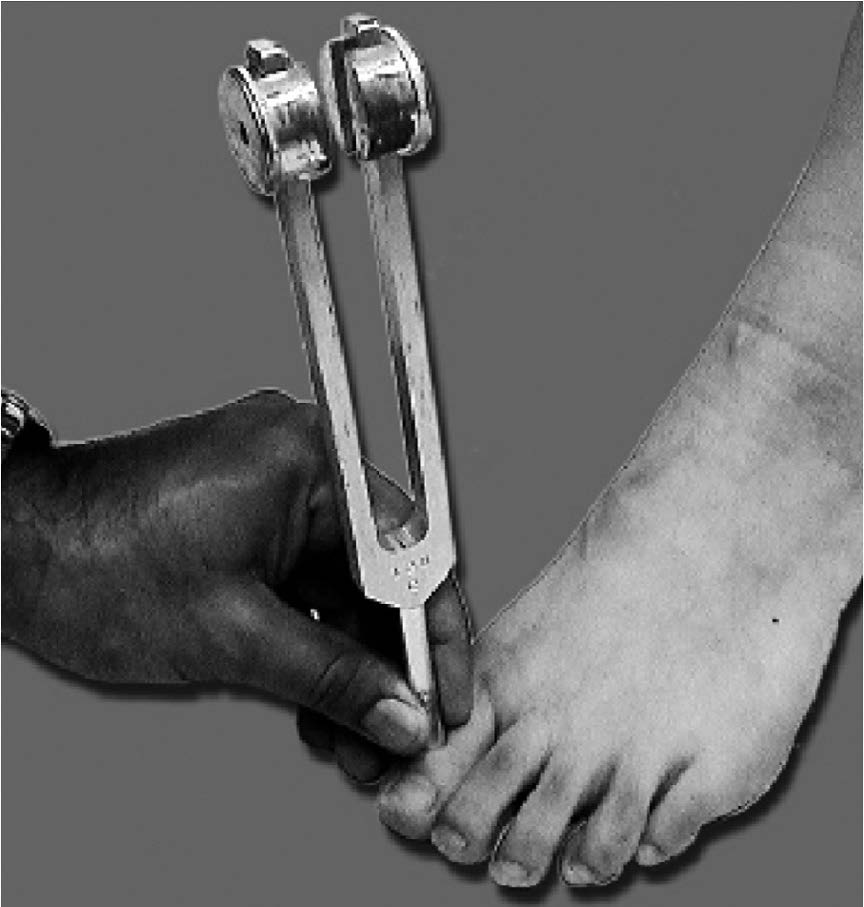Appendix 11B
Rapid Screening for Diabetic Neuropathy Using the 128 Hz Vibration Tuning Fork (the “On-Off” Method)
 1. Strike the tuning fork against the palm of your hand hard enough that it will vibrate for approximately 40 seconds. 1. Strike the tuning fork against the palm of your hand hard enough that it will vibrate for approximately 40 seconds.2. Apply the base of the tuning fork to the patient’s forehead or sternum and ensure that the vibration sensation (not just the touch sensation) is understood. 3. With the patient’s eyes closed, apply the tuning fork to the bony prominence situated at the dorsum of the first toe just proximal to the nail bed. Ask if the vibration sensation is perceived. 4. Ask the patient to tell you when the vibration stimulus is stopped, and then dampen the tuning fork with your other hand. 5. One point is assigned for each vibration sensation perceived (vibration “on”). Another point is assigned if the correct timing of dampening of the vibration is perceived (vibration “off”). 6. Repeat this procedure again on the same foot, then twice on the other foot in an arrhythmic manner so the patient does not anticipate when the stimulus is to be applied. 7. Although this test can be used to rule out the presence of neuropathy, threshold scores do not exist to indicate the risk of future onset of neuropathy. |
Click to view printable and saveable pdf
*The Canadian Diabetes Association is the registered owner of the name Diabetes Canada. All content on guidelines.diabetes.ca, CPG Apps and in our online store remains exactly the same. For questions, contact communications@diabetes.ca.


